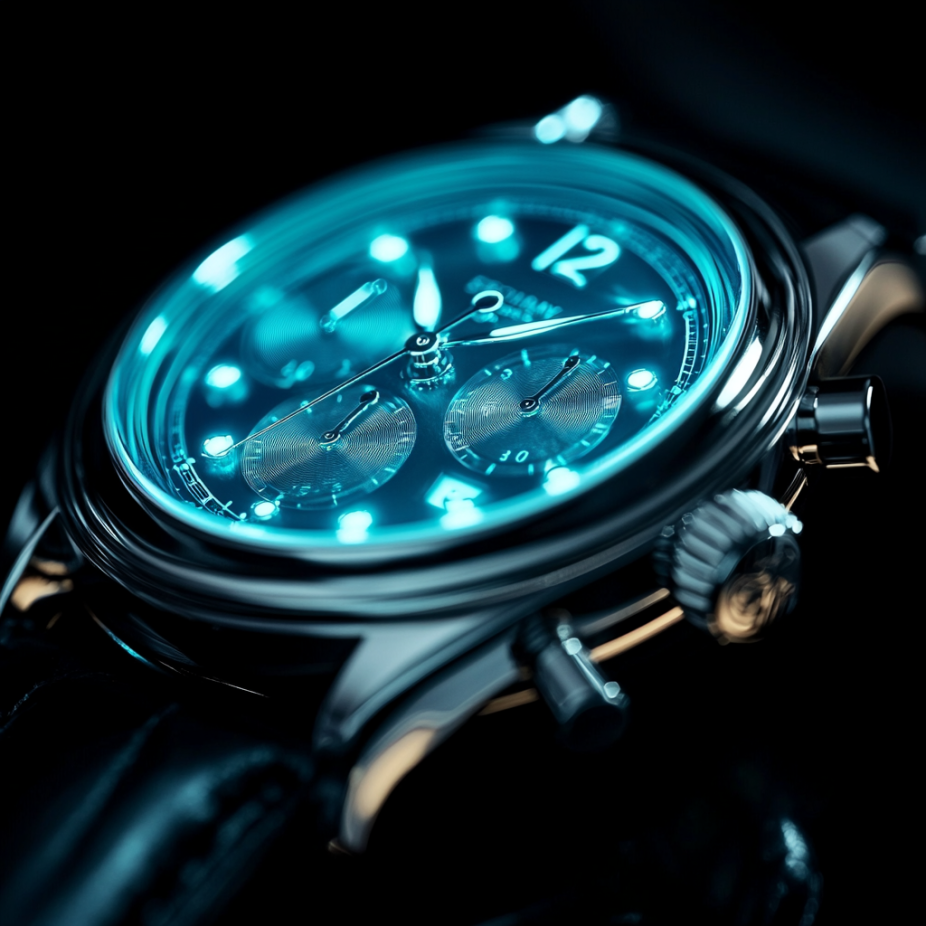From Radium to Super-LumiNova: The Journey of Watch Illumination Technology

For those of us who appreciate the subtle nuances that elevate a watch from a mere timekeeper to a true companion, the ability to glow in the dark is one detail we often overlook. Yet, that soft glow is the result of over a century of innovation—a journey that moves from hazardous materials to cutting-edge technology. The evolution of watch illumination is a fascinating blend of science, safety, and progress. Let’s explore how this feature has evolved, from the early days of radium, through the era of tritium, and into the modern world of Super-LumiNova.
The Early Glow: Radium and Its Risky History
In the early 1900s, radium was the material of choice for making watch dials glow in the dark. Discovered by Marie Curie, radium’s natural luminescence found immediate practical use, especially for military watches, where the ability to read time in low-light conditions was essential. Radium-laced paint was applied to the hands and numbers, creating that characteristic greenish glow.
But radium came with a hidden danger. The tragic story of the “Radium Girls” is a stark reminder of that risk. Factory workers who painted watch dials with radium often licked their brushes to maintain fine tips, unknowingly ingesting the radioactive substance. The resulting health crises led to public outcry and, by the 1960s, the banning of radium in watch production. It's a sobering chapter in the history of horology and a powerful reminder of how far we've come in the pursuit of safety.
Tritium: A Safer Glow
In the wake of radium, tritium emerged as a safer alternative. Used from the mid-20th century, tritium emits beta radiation, which doesn’t penetrate human skin, making it a less harmful choice. Applied in much the same way as radium, tritium provided a continuous glow, but without the need for an external light source to recharge.
While its glow is more subtle and fades over time (typically after about 20 years), tritium became a staple in military and tactical watches, where dependable illumination in darkness was vital. You’ll often find tritium marked on watch dials with a "T" or "T<25" to indicate safe levels of radiation.
The Non-Radioactive Revolution: Super-LumiNova
The 1990s marked a significant shift in watch illumination with the advent of Super-LumiNova. This photoluminescent material doesn’t rely on radioactivity, making it completely non-toxic and environmentally safe. Instead, Super-LumiNova absorbs light during the day and emits it at night, creating a bright, long-lasting glow.
Though it requires exposure to light to charge, once activated, Super-LumiNova glows for hours and remains effective even after years of use. Luxury watch brands like Rolex and Omega quickly adopted this safer, non-degrading material, making it the standard for modern timepieces.
Tritium Gas Tubes: The Modern Military Solution
Despite Super-LumiNova's rise in popularity, tritium hasn’t been left behind. Today, it’s often used in the form of tritium gas tubes, a modern innovation that creates a continuous glow without the need for external charging. These tubes contain tritium gas and a phosphorescent coating, which glows when the tritium decays. The glow is steady and lasts up to 20 years, making tritium gas tubes ideal for watches designed for extreme conditions.
Brands like Ball and Luminox have embraced this technology, crafting watches that stay legible even in the darkest environments—perfect for military personnel, adventurers, or anyone who relies on consistent illumination.
Final Thoughts
The evolution of watch illumination is a testament to progress—from the dangerous days of radium to today’s sophisticated, safe solutions like Super-LumiNova and tritium gas tubes. These advancements not only enhance the functionality of watches but also reflect the ingenuity and craftsmanship that define horology.
For those of us who appreciate the details that make a watch truly special, the journey from radium to Super-LumiNova is a reminder of how far we’ve come. The next time your watch glows in the dark, it won’t just be a helpful feature—it’ll be a reflection of over a century of innovation.